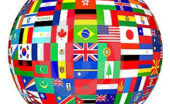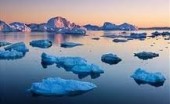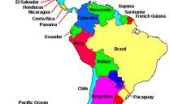Molly Minturn - My family is heartbroken to share that my father died in surgery on Monday, Feb. 10. It…
Wednesday Night #1334
Written by Diana Thebaud Nicholson // September 26, 2007 // Climate Change, Herb Bercovitz, Jacques Clément, Margaret Lefebvre, News about Wednesday Nighters, Reports, Wednesday Nights // 1 Comment
26 September 2007
This is National Biotechnology Week which we would have expected to produce great chest-thumping from our city, given that Montréal is [not only] a highly regarded biotechnology R&D centre, [but also] home to the Biotechnology Research Institute (BRI) of the National Research Council (NRC) . Absent the expected municipal chest-thumping vaunting the region’s ranking among the major biopharmaceutical cities in North America and home to the highest concentration of biotechnology companies in Canada, in a spirit of civic mindedness (is that really a word?), we propose, with your help, to devote some part of this Wednesday evening to the topic. Furthermore, as many of you do know, Wednesday Night has its very OWN member of the NRC in the person of Margaret Lefebvre who has promised to remove her CAIF hat (see below) and replace it with the large flowery NRC one.
While on the topic of Biotech, we call to your attention the promising news from Singapore of the development of a portable device that can detect the H5N1 bird flu virus faster and cheaper than any other method.
Our last week’s allusion to how quickly hot news items turn cold is borne out once again, although we spy some recurring themes.
Although the highly successful meeting of the Parties to the Montreal Protocol has ended with enthusiastic endorsement by none other than Minister of Environment John Baird, climate change remains on our agenda as the UN Secretary-General convened the heads of state of some 150 nations to a special meeting in New York
George Bush wasn’t there; he’s hosting his own [smaller] party in Washington on Thursday and Friday (UN hosts global warming shindig, but Bush chooses just to eat and shun ) and Stephen Harper has announced at the UN that Canada prefers APEC to Kyoto.
Meanwhile the ICAO Assembly continues to debate questions surrounding aviation’s carbon emissions. Reports are that the sessions are providing a bumpy ride , and that (once again/as usual) the U.S. finds itself on the opposite side from the EU . The good news is that Tom Windmuller, like climate change, is still with us. We are delighted and look forward to his update on this, or any other topic that appeals to him.
At the top of today’s business news is the announcement that Abu Dhabi National Energy Co., the state-controlled power generator and oil producer, agreed to buy Canada’s PrimeWest Energy Trust for about $4 billion in the biggest-ever North American takeover by a United Arab Emirates company. We cannot help but connect the dotted lines to the decision of the Conservative government to go ahead with Bill C-52 without the amendments requested by the Canadian Association of Income Funds (CAIF).
The ramifications of this story will certainly figure in Wednesday’s debate whereupon Margaret will change hats.
Other topics worthy of consideration:
The 3-M story of the military versus monks in Myanmar is a surprising development, altough we confess to being somewhat confused as to why the protest by the monks started over rising fuel prices – we thought they walked everywhere. Whatever, it is wonderful to witness the peaceful protestors confounding the thugs who have reduced the country to such misery and we say “Buddha Bless Them”
The visit by (radical, Holocaust-denying) Iranian president Mahmoud Ahmadinejad to the U.S. and his appearance today at Columbia University
The immediate and harsh effect of parity on Canadian retail sales [see also]
and the manufacturing sector.
Finally, as we awaited the closing of the by-election polls in Charlevoix, we were riveted by the William Marsden story in the Gazette about Mme Marois’ beautiful chateau on Ile Bizard; it seems that a law suit is in the offing.
The Report
Wednesday Nighters seem to have become more adventurous. This week, it was Danny van Gelder’s turn to recount his recent trip to the Yukon and Alaska., starting in Whitehorse and going up to the Kluane National Park , the Alaska Highway and down to Dawson. He reports that the scenery is spectacular, he saw some animals including baby moose and unfamiliar bird species, very few people and probably the best highway in Canada (paid for by the Americans).
Once you get there, you realize how much more North there actually is
The National Research Council (NRC)
Prologue
A truism often quoted up to about three quarters of a century ago states that self-praise is no recommendation. Certainly, Canadians tend to not brag about the achievements that have brought our country universal recognition but rather, see us as fugitives from those attributes that we appear to have in common with our southern neighbours. Ask your neighbours about the National Research Council and they will probably recall that it has something to do with the national time signal. In reality, it is much more.
Margaret Lefebvre has recently been appointed to the Council of the NRC and as a new member, has visited most of the installations around the country. In each case, she has asked to see what projects the researchers are most excited about and has been rewarded by a level of enthusiasm that is completely invigorating. She particularly relishes the environment that is attracting scientists to return from the United States. They come because the structure of the NRC facilitates the creation of “pods” of researchers who all come together and have a more immediate impact on Canadian public policy. She also notes that the NRC is not a “patent-grabbing” organisation. If, however during the process of development and testing, NRC researchers come up with new by-products, NRC would hold patents related to those products.
NRC has been the Government of Canada’s prime organization for research and development since 1916, has quietly brought universal recognition and acclaim to Canada and has created an intellectual environment that has attracted some of the world’s most talented scientists. Unlike its US counterpart, Canada’s is at the service of industry. For an idea to reach the market, it must be tested, proven safe, reliable and useful to humans. That is what the NRC can offer, along with development funding, and the NRC label is a standard (like CSA or ISO) that is accepted around the world.
Its testing facilities, often unique, are kept current, serving Canadian industry in innovation. An NRC product approval rating is a virtual guarantee of success for any product or process and its inventor.
The NRC can claim a major role in the development of 10 of the 50 most important Canadian inventions:
– The Canadarm
– Cobalt-60 cancer bomb treatment
– Computer animation – Canada is a world leader
– Crash position indicator
– Electric wheelchair
– Electronic synthesizer
– Explosives detector
– Heart pacemaker
It has provided research and development support, expertise and/or funding for
– The BlackBerry
– Ultra violet degradable plastics
– The Weevac-6 baby evacuation stretcher
– The Anti-Gravity suit,
as well as the development of many other medical, agricultural and sustainable development products. The NRC Institute for Nutrisciences and Health is active in identifying how bioactive compounds found in nature can be used to improve human and animal health. The Institute focuses on breakthrough discoveries and technologies in neurobiology, immunobiology and glycobiology, focused on research and development associated with neurodegenerative diseases, infectious diseases, cancer vaccines, immunotherapeutics and of bioproducts, and on moving these discoveries out to the marketplace.
Airlines, although relatively efficient in their use of petroleum, have come under fire for problems that are not uniquely of their making. Governments are either unwilling or unable to provide adequate airport and modern air traffic control facilities to meet demand that, despite the higher airfares resulting from rising costs of jet fuel, is increasing at 5% p/y.
As airlines succeed in filling planes, making for better profitability and more fuel efficiency, a delay or cancellation can cause chaos, leaving passengers stranded with unacceptable delays in obtaining alternate travel arrangements. Lengthy waits on the ground before takeoff are frequent, causing missed connections, lost luggae and increased stress for passengers [and in burning more fuel, adding emissions to the air].
[The domino effect of cancellations was illustrated by the JetBlue fiasco of last February illustrates the entire problem. Starting with a snowstorm that hit the East Coast, in the end, 1,096 flights were cancelled, and thousands of passengers, flight attendants and pilots were stranded.]
Adding new aircraft to airline fleets even if it were feasible (which it is not), would simply exacerbate the situation by placing additional demands on outdated traffic control technology and overcrowded airports.
A recent news report describes a Memphis air traffic control radio blackout with two hundred aircraft in the air in the immediate vicinity. Happily they landed or went on their way without incident.
The 50-year old air traffic control system in the U.S. is antiquated and is not designed to serve even 2/3 of today’s traffic. It desperately needs to be modernized. It is said to be a simple political fight over power and who pays.
The European solution is the seamless marriage of long haul air travel with short haul rail, which would ease both airport congestion and passenger frustration, freeing up capacity for long-haul flights. More and more European airports incorporate train stations in the air terminals. But the necessary infrastructure is very costly.
Environmental change and energy security
Despite increasing evidence of environmental change, the response has ranged from the ice age having occurred without human intervention to acknowledging that it is a problem but one that can be solved by the adoption of simple conservation measures, to belief that it would be a good idea if China and India were to save the world by acting, to refusing to acknowledge that the current wave of environmental exchange has resulted primarily from Man’s success in achieving a longer, healthier life and energy- based technology. The unbridled intrusion of humans on green space has had a significant environmental effect. It is claimed by some that, with the exception of such European countries as France and Germany, the concepts of conservation and alternative energy sources have not been adequately marketed.
The proponents of nuclear energy tell us that we must stop wasting public funding on the development of clean technologies such as wind and solar to replace fossil fuels, which are doomed to only respond to a small part of the world’s requirement. In their view, we need a high-powered programme to push nuclear technology towards fast breeder reactors right now. The problem is the need for attitude change – until the public fear of nuclear power is addressed and turned around, public policy will not take affirmative action on its development. To some degree, the problem has its roots in the ’50s and ’60s when the leading scientists displayed an arrogant dismissal of any need for public relations or debate.
While we tend to think that this is a huge problem in Canada, we should look at France where the population accepts without question that some 70% of power is generated by nuclear sources.
Blended ethanol and gasoline fuel was originally rejected in Australia where the consumer felt ripped off because he perceived that he was paying for ‘cheap gas’. Some 10 years later, with positive marketing approaches, the blend is now accepted.
Wednesday Nighters have concluded for some time, that ineffective political plans and blaming other nations will not do the trick. It is becoming increasingly evident that multiple measures including insulation, investment in and implementation of conservation measures and an effective sales pitch are required, undoubtedly including increasing use of nuclear energy. As for expensive infrastructure, if not visible, it is usually deemed not politically advantageous. That must change.
The Economy (see also Jacques Clément’s Report on the Economy)
Today the Dow Jones was 160 points away from its July 19 record, thanks to the lowering of the Fed discount rate and Fed Funds rate last week which was a bold move on the part of Fed chairman, Ben Bernanke to stave off recession.
Basically the Fed is in a recession watch
Fourth Quarter Outlook:
Canadian Dollar: $1.02U.S.
Euro: $1.43U.S.
Crude $85.00
Gold: $750.00
TSX 14,500
Dow-Jones 14,250 (new record)
Redefining terms
The Bank of Canada and Ministry of Finance are fine-tuning the definition of productivity and there is also a major debate on the inflation target whether it should remain at 1-3%.
Consumer spending
Anecdotal evidence seems to indicate that more Canadians took long holidays, but stayed home this summer and with the good weather most of the country enjoyed, are not yet thinking of buying fall and winter clothing. This is reflected in the last three months’ negative retail sales. Consumer spending and confidence have been affected by the mortgage crisis and the ABCPs.
With the Canadian dollar at par, there is vocal discontent among Canadian consumers over the differential in prices for products ranging from automobiles to telecommunications, books, clothing and food. Douglas Porter, the deputy chief economist at BMO Capital Markets reveals this week that the average price on a basket of assorted goods is now roughly 24% higher in Canadian dollar prices than U.S. dollar prices on identical goods at the current exchange rate. While some differential may be explained by the costs of designing to specs and the discrepancy in size of the respective markets, there is resentment (if not rage) over the admission that many manufacturers are suggesting that Canadian prices often are simply “what the market will bear”. Canadians were treated this week to the spectacle of the Minister of Finance suggesting that they should go across the border to shop. This would not seem to be designed to encourage consumer spending in Canada.
Emerging markets
Wednesday Night’s emerging markets expert says that the paradigm between emerging markets and developed markets has completely changed. It used to be in the 90s if the industrial world had a correction of say 3%, there would be about 9% correction in the emerging markets. In August the opposite happened. Emerging markets are recognized as the engines of the world economy and multiples are lower than in North America and Europe. In the coming months it is likely that we will see more money flowing into emerging markets.




One Comment on "Wednesday Night #1334"
21 June 2007
(BBC) Planemakers confront green issues
By Jorn Madslien
Business reporter, BBC News, Paris air show
Carbon dioxide emissions from aircraft are a significant and growing contributor to harmful global warming. It is time for the industry to sort it out, says Scott Carson, chief executive of Boeing’s commercial planes division.
“The industry has to come together to commit resources and human energy, and to say that this is a priority,” Mr Carson says.
“I think we’ve gotten on to the same page in a hurry,” he adds, insisting that the industry spends a lot on technology, on weight reduction and on improved efficiency – and thus, reduced emissions.
“Aircraft are 70% more efficient than they were when they were first brought into the industry half a century ago,” he points out. More